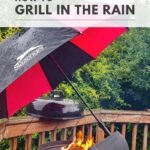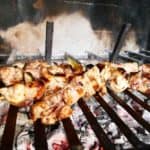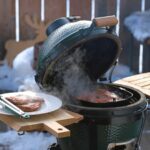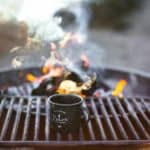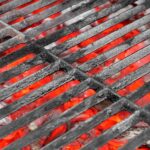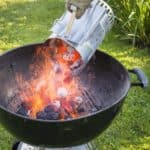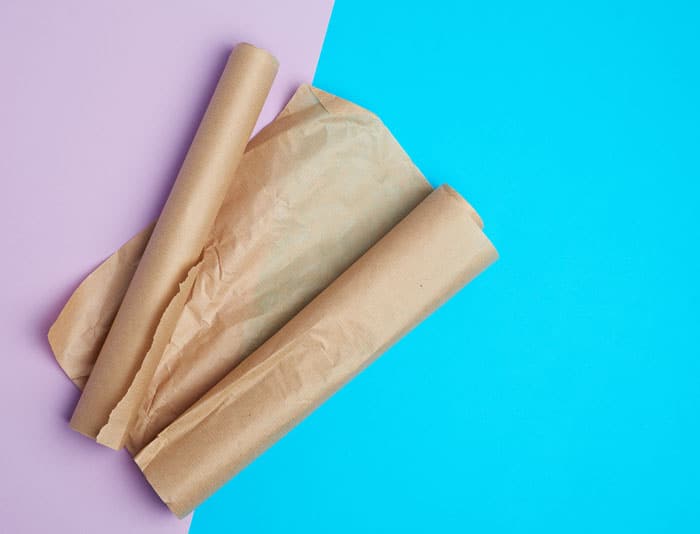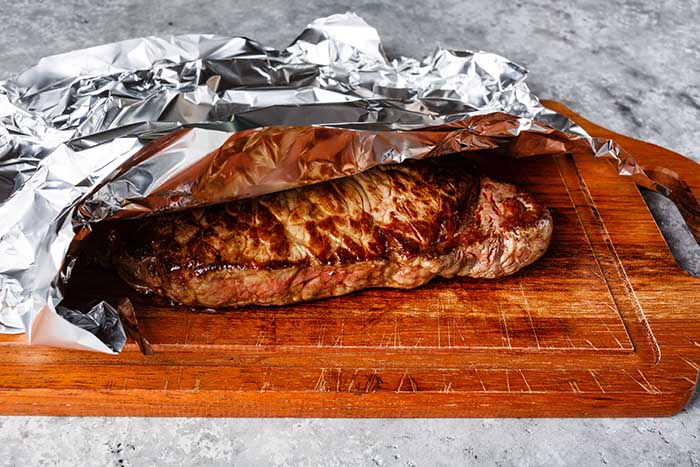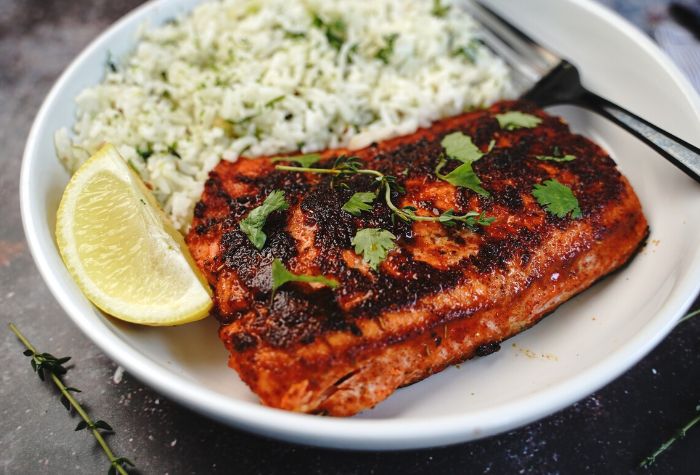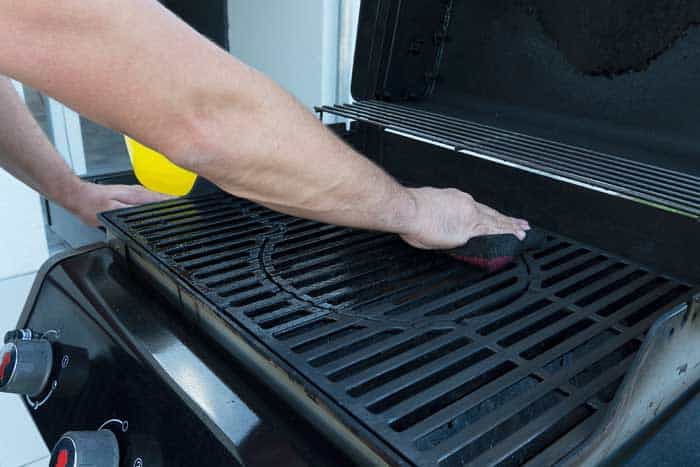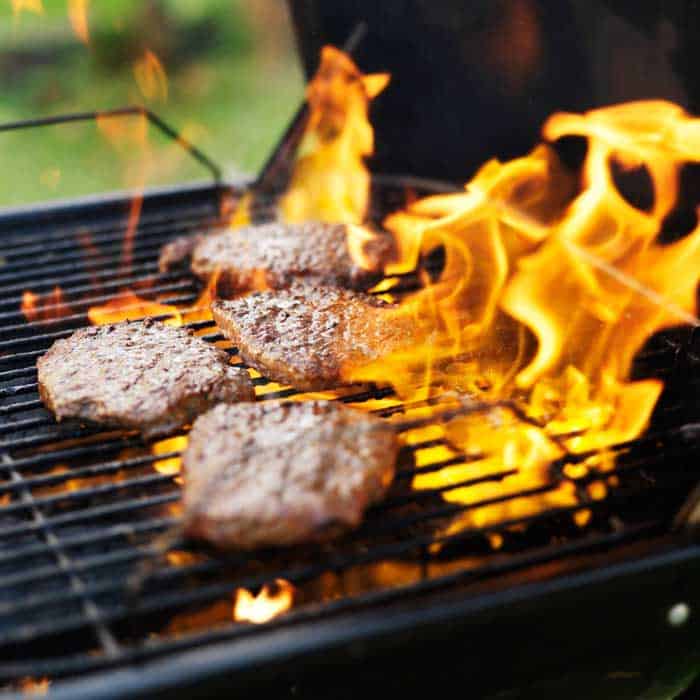Barbecue grilling doesn’t need to end with wet weather. From the best gear to creative shelter ideas, discover everything you need to know about grilling in the rain.
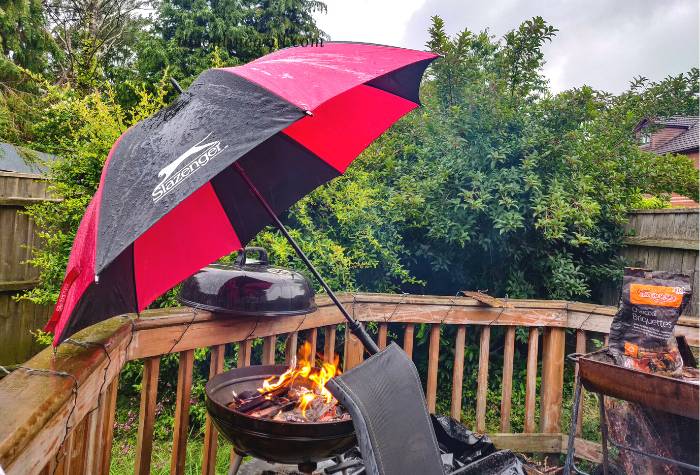
Grilling in the rain doesn’t need to be a struggle, and it certainly doesn’t need to stop your grill party. With intelligent planning and the right setup, you can be prepared for all elements, including wet weather.
Enjoy perfectly grilled grub with our guide to rainy day barbecuing, from shelter setups to weather-proof cooking techniques. This is how to grill in the rain.
Backyard Canopy
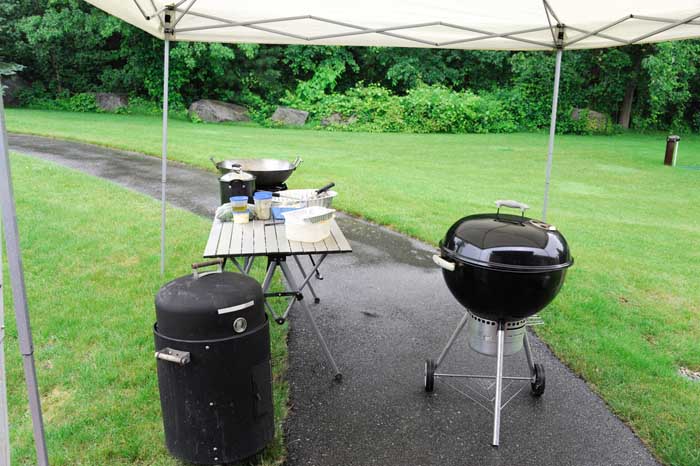
Investing in a pop-up canopy for your backyard or tailgate isn’t just a quick wet weather hack, but also a long-term way of future-proofing your outdoor kitchen against the elements. A good pop-up canopy is easy to set up and dismantle, and will last for years.
In order to accommodate your outdoor kitchen and grill area, look for a waterproof canopy with plenty of space underneath. The largest pop-up canopies tend to be similar in design to gazebos, giving you plenty of space in which to maneuver without knocking into beams or poles. Also, ensure that it’s tall enough to accommodate your tallest grillmaster, with a few inches of room to spare.
Assemble your canopy away from structures and, in case of strong winds, flammable objects such as wood or propane tanks.
Portable Windbreak
It’s easy to forget that an element that often combines with wet weather is the wind. As if it wasn’t enough that rain causes havoc from above, it can attack from all sides as well. So, while a canopy can do most of the work, investing in a windshield can help complete the job.
Grilling is all about controlling flame temperature, and one surefire way of losing control is by being exposed to the combination of rain and wind. Needless to say, an unpredictable flame blowing one way to the next presents an instant safety hazard.
Using a windshield doesn’t just guard your grill against wild temperature fluctuations. It can also protect your environment from the risk of wildfire, whether you’re in your backyard or grilling on the road by your RV or at a tailgate.
A good windshield can be as simple as a fabric screen or side awning. For the sake of portability and dealing with changeable wind patterns, invest in a light material and avoid permanent fixtures.
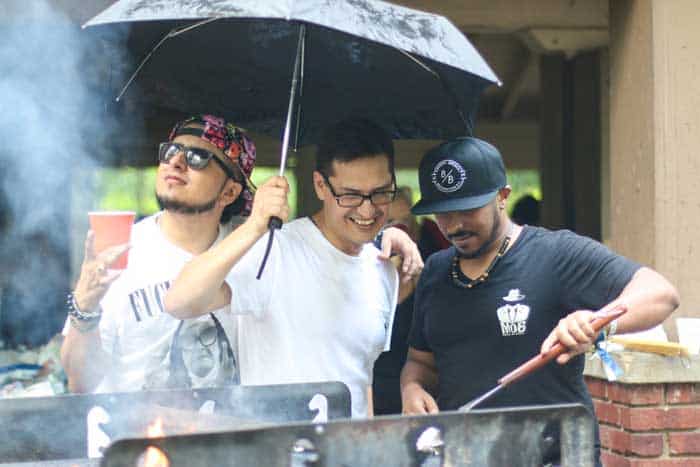
Precook Your Meat
I confess this ‘hack’ is cheating, but when faced with heavy rainfall sometimes we have little option but to play the hand we’ve been dealt.
Precooking your meat ahead of time is the best way to ensure it’s been cooked to safe internal temperatures, without being disturbed by the weather. Furthermore, it gives you more time to cook the meat low and slow, ensuring it tastes as good as possible.
This is where reverse searing comes in. This barbecue cooking method is perfect for beef burgers and steaks, whereby we slowly bring the meat to an internal temperature of 115°F (46°C) for medium-rare before we sear it over high heat to lock in the flavor and create a delicious sear on the outside. The meat will still have that distinct wood-fired flavor, leaving your guests (mostly) none the wiser.
Grill Thermometer
Rain can make grill temperature control difficult, with ambient temperatures sinking and the accompanying wind playing havoc with vent airflow. A digital grill thermometer will help you monitor temperature fluctuations, providing an asset that’s invaluable when grilling, particularly in bad weather conditions.
Look for a digital dual-probe grill thermometer in order to monitor both grill surface and internal meat temperatures at once. Don’t be cheap here: Temperature accuracy is key.
The best modern-day thermometers have Bluetooth and WiFi capabilities, allowing you to monitor cooking temperatures from afar without having to open the lid and disturb your grill’s cooking temperature.
Use More Charcoal
If you’re using a charcoal grill, adding more coals than normal will help your flames stand up to the elements. This will help maintain your target grilling temperature by mitigating the cooling effects of the rain, while also providing added insulation for your lit coals.
Charcoal absorbs moisture easily so will take longer to ignite in the rain than normal. To get around this, light your coals in a charcoal chimney. Once the coals are fully ignited, transfer them to your grill, keeping them as tightly contained as possible.
Cover Electric Components
It’s not just charcoal grills that we need to be mindful of. Both pellet grills and gas grills feature a number of electrical components that we need to be mindful of. From pellet grills’ control panels, heating elements, and auger systems, to propane gas grills’ ignition systems. Throw rain into the mix and you’re asking for trouble.
Shelter the grill as best as possible, make full use of the chamber lid, and ensure that all power sockets or extensions are fully covered or placed inside. If you’re using a pellet grill, keep the hopper covered at all times in order to stop moisture from spoiling the wood pellets. If you have a Traeger pellet grill, see our full guide on how to use a Traeger in the rain for more wet weather tips.
